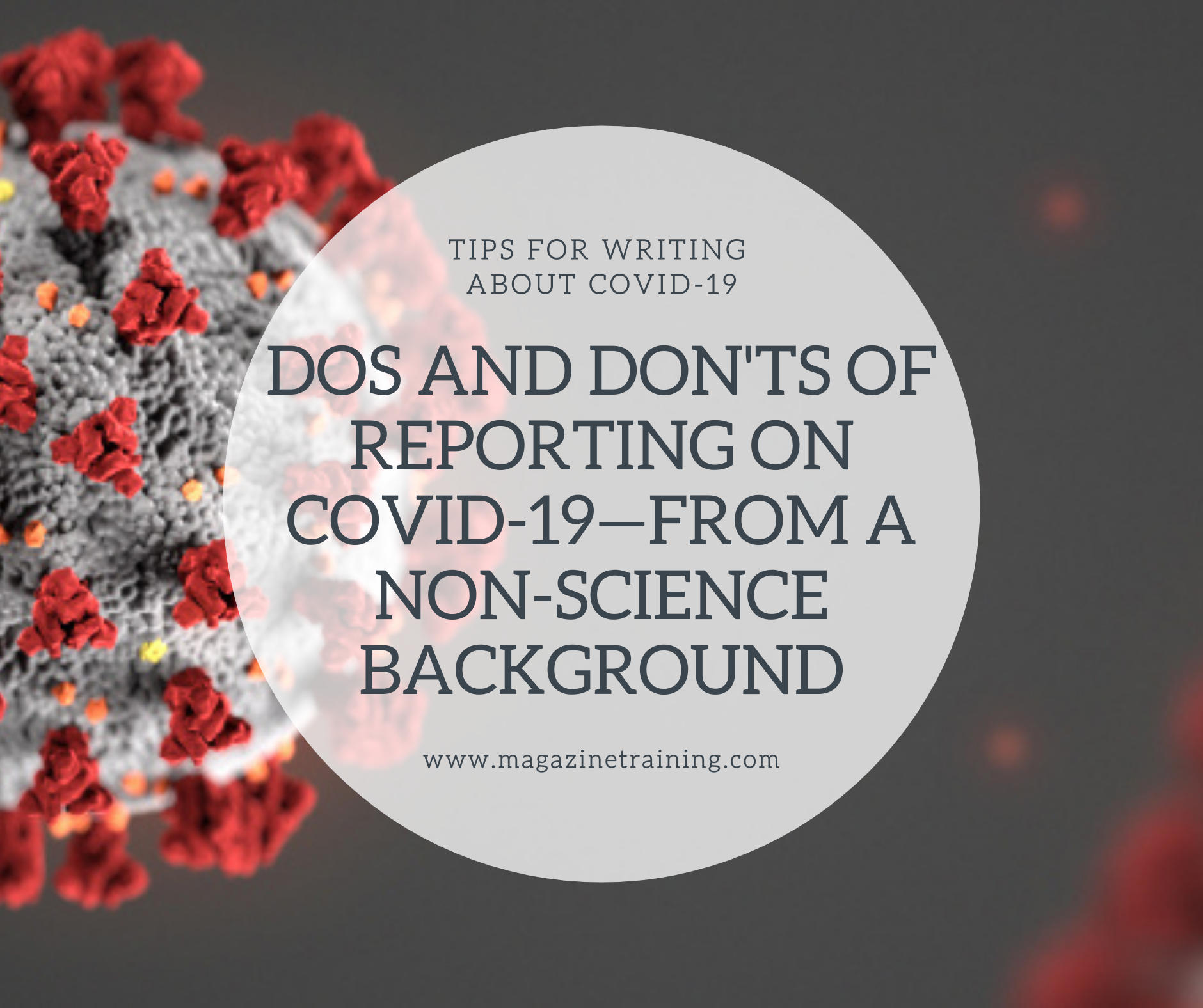
As COVID-19 continues to spread, journalists around the world are working tirelessly to provide the latest news on the pandemic for their audiences. For reporters who don’t have experience covering health and science news, delivering updates on COVID-19 can be very difficult.
SciLine, which connects journalists to scientific experts, recently held a webinar for journalists of all backgrounds that provided guidance on covering COVID-19.
Panelists included Laura Helmuth, health and science editor for The Washington Post; Caroline Chen, a health care reporter for ProPublica and Georges C. Benjamin, M.D., executive director of the American Public Health Association.
We’ve compiled the best tips from SciLine’s below:
Gathering sources
DO: Collect multiple sources
Helmuth advised reporters to connect with people at hospitals, universities and government agencies.
Every reporter should have at least an epidemiologist, a lab expert and a local health officer on their team, added Chen. These contacts will be able to provide critical information for stories, and act as helpful off-the-record sources to provide context for new information and fact-check government statements.
DON’T: Forget to do background research
Once you have your list of sources, it is important to carefully vet the information they give you as a precaution, Dr. Benjamin said. He reminded the audience that COVID-19 is “a multi-sectional, multi-agency issue,” and advised reporters to never neglect government agencies that deal in health and healthcare.
Rapid reporting
DO: Be transparent
News surrounding COVID-19 is constantly updating. In order to most effectively report on COVID-19, while keeping up with the news cycle, Helmuth and Chen suggested showing readers the process of collecting data and up-to-date information in real time.
“Science can be really messy,” Helmuth said, and by showing readers this messiness, it alleviates their anxiety through transparency. Helmuth also stressed that repeating known information is a good thing.
Always provide time stamps for your information in order to avoid circulating numbers that could be outdated by the time of publication, Chen added.
DON’T: Estimate
While you should be precise with subjects like supply and testing capacity, Chen warns against trying to be too precise with numbers that are far less solid, and changing rapidly. Chen calls these estimates such as cases and fatality rates “squishy numbers.” It is important that the audience understands that these are imprecise and changing quickly.
Misinformation
DO: Debunk misinformation
In the hysteria surrounding COVID-19, misinformation and conspiracy theories are inevitably circulated online. When combating these stories, journalists should debunk it by noting the source of the false information, replacing it with facts and explaining why it’s circulating.
DON’T: Become part of the problem
According to Dr. Benjamin, journalists can avoid becoming part of the misinformation problem by making sure their headlines reflect the reporting in their stories.
It’s also important to be mindful of the tone of your writing. According to Chen, the wrong language and word choice can easily cause the audience to panic.
by Ezra Del Rosario, International Journalists’ Network
Related posts
Magazine Training International’s mission is to encourage, strengthen, and provide training and resources to Christian magazine publishers as they seek to build the church and reach their societies for Christ.

